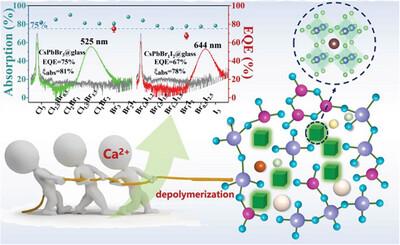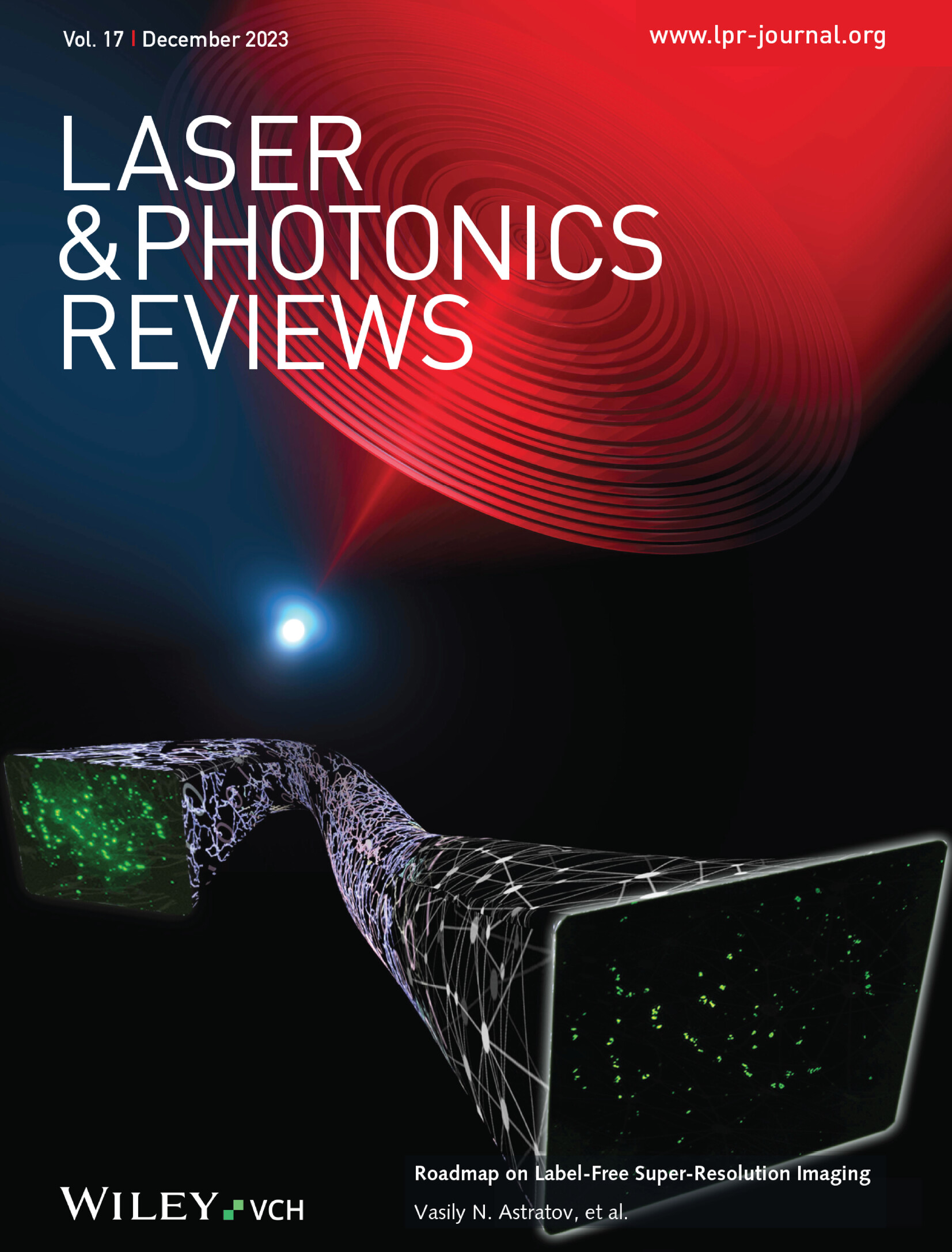CsPbX3@Glass (X = Cl, Br, I) Nanocomposites with Whole-Family High Absorption Efficiency above 75% for Backlit Display
IF 9.8
1区 物理与天体物理
Q1 OPTICS
引用次数: 0
Abstract
In situ growth of CsPbX3 (X = Cl, Br, I) perovskite quantum dots (PeQDs) in inorganic glass can address their stability issue for wide-color-gamut full-color backlit displays. However, most of the reported CsPbX3 precipitated in glass are limited by low absorption and low external quantum efficiency (EQE). This work demonstrates that CaO additive can adjust the polymerization of borosilicate glass network, and promote the precipitation of whole-family CsPbX3 PeQDs in glass with a record absorption efficiency above 75%. As a result, the as-prepared green and red CsPbX3@glass (X3 = Br3, Br1I2) exhibit high EQEs of 75% and 67%, and can pass harsh stability tests after immersing water, irradiating by intensive blue light and experiencing 85 °C/85%RH aging over 1000 h owing to effective protection of PeQDs from external environment with the help of robust glass matrix. As a proof of concept, a white backlit module is fabricated by coupling a single-layer yellow PeQDs enhanced film (PQDF) with blue light guide panel, and the designed prototype display device with wide color gamut of 115% of the NTSC 1953 exhibits a more realistic and vivid color images. This work will pave the way for the realization of commercial application of ultra-stable CsPbX3@glass in QD-backlight displays.

用于背光显示屏的具有 75% 以上全族高吸收率的 CsPbX3@玻璃(X = Cl、Br、I)纳米复合材料
在无机玻璃中原位生长 CsPbX3(X = Cl、Br、I)包晶量子点(PeQDs)可以解决其稳定性问题,从而实现宽色域全彩背光显示。然而,大多数已报道的在玻璃中沉淀的 CsPbX3 都受到低吸收和低外部量子效率(EQE)的限制。本研究表明,氧化钙添加剂可调节硼硅玻璃网络的聚合度,促进玻璃中全族 CsPbX3 PeQDs 的析出,其吸收效率达到创纪录的 75% 以上。因此,制备的绿色和红色 CsPbX3@glass (X3 = Br3,Br1I2)显示出 75% 和 67% 的高 EQE,并且在浸水、高强度蓝光照射和经历超过 1000 小时的 85°C/85%RH 老化后,都能通过苛刻的稳定性测试,这是因为在坚固玻璃基体的帮助下,PeQDs 得到了有效保护,免受外部环境的影响。作为概念验证,通过将单层黄色 PeQDs 增强薄膜(PQDF)与蓝光导光板耦合,制造出了白色背光模块,所设计的原型显示设备色域宽广,达到了 NTSC 1953 标准的 115%,能显示出更加逼真生动的色彩图像。这项工作将为实现超稳定 CsPbX3@glass 在 QD 背光显示器中的商业应用铺平道路。
本文章由计算机程序翻译,如有差异,请以英文原文为准。
求助全文
约1分钟内获得全文
求助全文
来源期刊
CiteScore
14.20
自引率
5.50%
发文量
314
审稿时长
2 months
期刊介绍:
Laser & Photonics Reviews is a reputable journal that publishes high-quality Reviews, original Research Articles, and Perspectives in the field of photonics and optics. It covers both theoretical and experimental aspects, including recent groundbreaking research, specific advancements, and innovative applications.
As evidence of its impact and recognition, Laser & Photonics Reviews boasts a remarkable 2022 Impact Factor of 11.0, according to the Journal Citation Reports from Clarivate Analytics (2023). Moreover, it holds impressive rankings in the InCites Journal Citation Reports: in 2021, it was ranked 6th out of 101 in the field of Optics, 15th out of 161 in Applied Physics, and 12th out of 69 in Condensed Matter Physics.
The journal uses the ISSN numbers 1863-8880 for print and 1863-8899 for online publications.

 求助内容:
求助内容: 应助结果提醒方式:
应助结果提醒方式:


